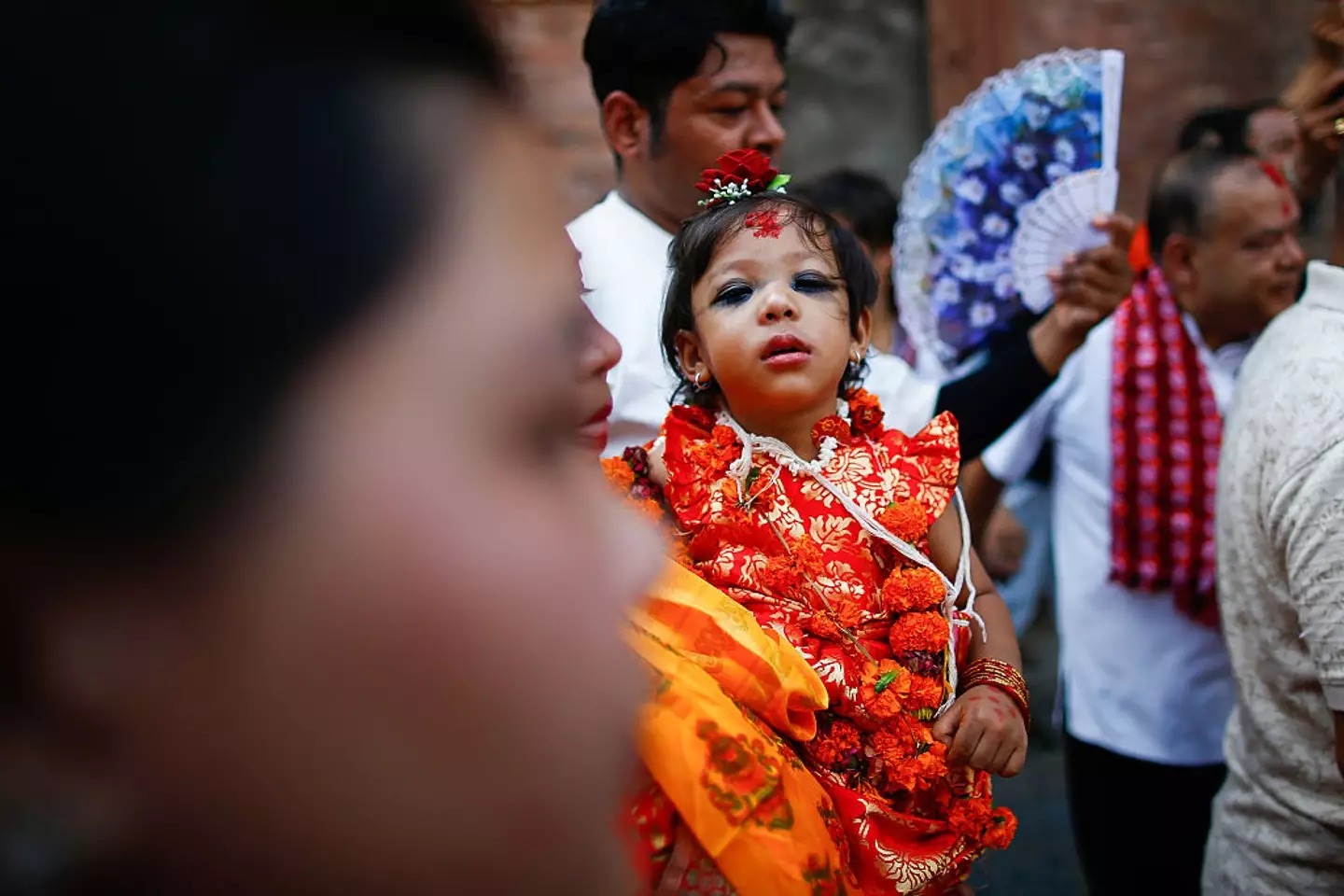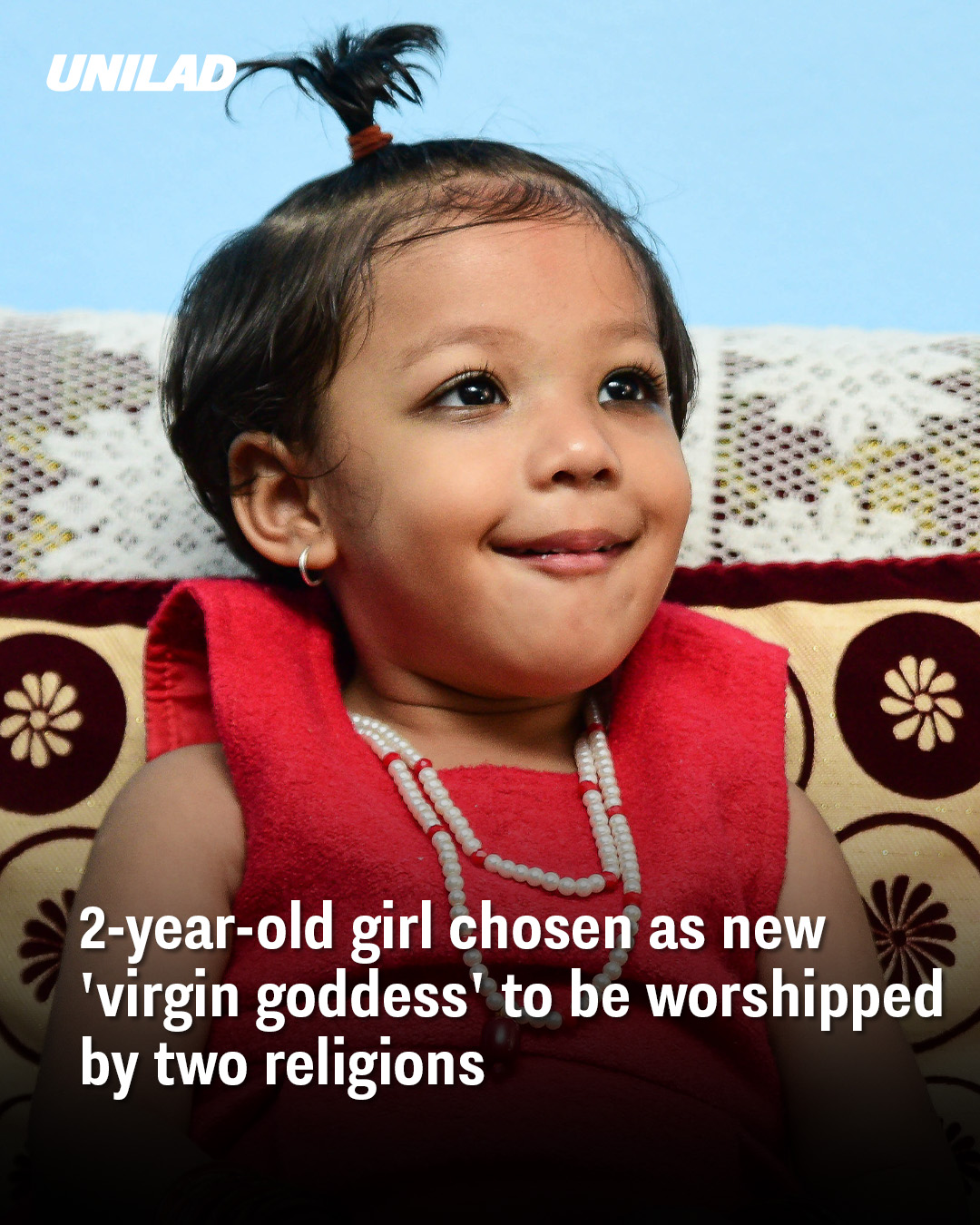Nepal has welcomed a new living goddess, as a toddler from Kathmandu has been chosen to serve as the nation’s revered Kumari.
A Sacred Tradition
On September 30, 2025, Aryatara Shakya, just two years and eight months old, was carried by her family through the streets of Kathmandu before entering her new home — the historic Kumari Ghar (Kumari’s Palace).
She replaces Trishna Shakya, now 11, who served as the living goddess since 2017 and, by tradition, returns to mortal life once she reaches puberty.
The role of Kumari — meaning “virgin goddess” — is one of Nepal’s most sacred traditions. The chosen girl is believed to embody the goddess Taleju, and she is worshipped by both Hindus and Buddhists.
How a Kumari Is Chosen
Kumaris are always selected from the Shakya clans of the Newar community, an indigenous group from the Kathmandu Valley.
To be chosen, the young girl must meet strict criteria:
-
Unblemished skin, hair, eyes, and teeth
-
Fearless nature, even in darkness
-
A calm and divine presence
Candidates are usually between the ages of two and four.
Aryatara’s father, Ananta Shakya, said there were signs even before her birth that she was destined for this role.
“My wife dreamed she was a goddess during pregnancy,” he explained. “We knew our daughter was going to be very special.”

Aryatara Shakya pictured with her parents (Safal Prakash Shrestha/NurPhoto via Getty Images)
The Procession and Rituals
On the day of her enthronement, Aryatara was dressed in bright red clothing, her hair styled in the traditional topknot, and a symbolic third eye painted on her forehead.
She was paraded through Kathmandu as devotees bowed, touched her feet with their foreheads, and offered flowers and money — the highest gesture of respect in Nepalese culture.
Aryatara will now live in the Kumari Palace, appearing in public only a few times a year during major religious festivals. During events such as Indra Jatra, she will be carried through the city in a golden chariot.
On October 2, she is set to bless devotees, including Nepal’s president, as part of her first official duties.
Life as a Living Goddess
While Kumaris are deeply respected, their lives are highly restricted. They rarely leave the palace, have only a few selected playmates, and spend much of their childhood in seclusion.
Traditionally, former Kumaris faced difficulties adjusting to ordinary life after stepping down — struggling with chores, attending school, and even marriage, due to folklore suggesting that men who marry ex-Kumaris die young.
However, modern reforms have softened these challenges. Today, Kumaris are allowed private tutors, access to television, and even receive a monthly government pension once they retire.

Aryatara is just two years old (Skanda Gautam/SOPA Images/LightRocket via Getty Images)
A Living Symbol
For Nepal, the Kumari represents the union of Hindu and Buddhist traditions, a living symbol of purity and divine blessing.
As Aryatara Shakya begins her sacred journey, her family, community, and nation see her not only as a beloved daughter but as a goddess destined to watch over them.
“She was just my daughter yesterday,” her father said softly, “but today, she is a goddess.”



